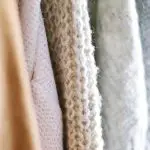You know the frustration of finding slime stuck to your favorite fabric, like trying to peel a sticker off a delicate surface.
But fear not, because we've got you covered with five effective ways to remove slime from fabric.
From the simple freezing method to the power of a vinegar solution, you'll be equipped with the tools to tackle any slime mishap.
No need to panic, just follow these expert techniques and soon your fabric will be slime-free once again.
Key Takeaways
- Freezing the fabric can help harden the slime, making it easier to scrape off.
- Using a vinegar solution can help break down the slime and make it easier to remove.
- Goo Gone is a powerful solvent that can effectively remove slime, but be sure to test it on the fabric first.
- Rubbing alcohol can be used to dissolve the slime, but avoid rubbing vigorously to prevent spreading it further.
Freezing Method
First, you'll want to place the fabric in the freezer for about 30 minutes to harden the slime. This method is effective for removing slime from fabric while minimizing the risk of spreading or embedding the slime further into the fibers. The freezing process helps to harden the slime, making it easier to remove without leaving a stain or residue. It's a simple and gentle approach that prioritizes fabric protection and stain prevention.
Once the slime has hardened in the freezer, carefully scrape off as much of it as possible using a dull knife or a spoon. Be gentle to avoid damaging the fabric. After removing the bulk of the slime, pre-treat the fabric with a stain remover or a mixture of dish soap and water. Gently dab the affected area, being careful not to spread the slime further. Then, launder the fabric as usual, following the care instructions.
Vinegar Solution
To continue removing slime from fabric, you can create a vinegar solution that effectively breaks down and lifts the remaining residue. Start by mixing equal parts of white vinegar and water in a spray bottle. Then, generously spray the vinegar solution onto the slime-affected area of the fabric. The vinegar works as a natural fabric softener and helps to loosen the slime from the fibers. Allow the solution to sit for a few minutes to penetrate the slime.
After letting the vinegar solution soak in, gently blot the area with a clean cloth to lift the slime. For tougher slime stains, you can add a few drops of lemon juice to the vinegar solution. Lemon juice contains citric acid, which further aids in breaking down the slime. Once you've blotted away as much of the slime as possible, launder the fabric as usual, adding a capful of fabric softener to the wash to help restore the fabric's texture and remove any lingering vinegar scent.
This method is particularly effective for removing slime from delicate fabrics.
Goo Gone
You can utilize Goo Gone to effectively remove slime from fabric. Goo Gone is a powerful solvent that can break down and remove tough, sticky residues like slime without damaging the fabric.
Here are some important points to consider when using Goo Gone or looking for alternatives:
- Goo Gone alternatives: While Goo Gone is effective, it's important to note that there are alternative products available that can also effectively remove slime from fabric. Look for products specifically designed to tackle adhesive residues while being gentle on fabrics.
- Fabric friendly cleaning products: When using Goo Gone or any alternative, always ensure that the product is safe for use on the specific type of fabric you're treating. Some cleaning products may be too harsh for delicate fabrics, so it's crucial to choose fabric-friendly options.
- Test in inconspicuous area: Before applying Goo Gone or any alternative to a visible area of the fabric, test it in a hidden or inconspicuous spot to ensure that it doesn't cause any damage or discoloration.
When using Goo Gone or seeking alternatives, always follow the manufacturer's instructions and recommendations for best results while keeping the fabric's safety in mind.
Rubbing Alcohol
Another effective method to remove slime from fabric is using rubbing alcohol, which can help dissolve and lift the sticky residue. The alcohol works by breaking down the slime's molecular structure, making it easier to remove.
To begin, test the rubbing alcohol on a small, inconspicuous area of the fabric to ensure it doesn't cause any damage or discoloration. Once confirmed, dampen a clean cloth with rubbing alcohol and gently dab at the slime. Avoid rubbing vigorously, as this can push the slime further into the fabric.
After applying the rubbing alcohol, use a clean cloth to blot and lift away the dissolved slime. If necessary, repeat the process until the fabric is slime-free.
It's important to note that using heat or chemicals in conjunction with rubbing alcohol isn't recommended, as it may cause damage to the fabric. Stick to the rubbing alcohol method alone for a safe and effective slime removal.
Laundry Detergent
A common method for removing slime from fabric is using laundry detergent, which effectively breaks down and lifts the sticky residue. When using laundry detergent for stain removal and fabric care, follow these tips:
- Choose the Right Detergent: Opt for a gentle, color-safe laundry detergent to prevent damage to the fabric. Look for detergents specifically formulated for stain removal to ensure effective slime removal without harming the fabric.
- Pre-treat the Stain: Before washing the fabric, pre-treat the slime stain with undiluted laundry detergent. Gently rub the detergent into the affected area and let it sit for 10-15 minutes to allow the detergent to penetrate the slime residue.
- Wash with Cold Water: When laundering the fabric, use cold water and the recommended amount of laundry detergent. Cold water helps prevent the slime from setting into the fabric while the detergent works to lift the stain.
Using the right laundry detergent not only aids in slime removal but also contributes to proper fabric care, ensuring that the fabric remains in good condition after the cleaning process.
Frequently Asked Questions
Can Slime Be Removed From Delicate Fabrics Like Silk or Wool Using the Freezing Method?
Yes, you can remove slime from delicate fabrics like silk or wool using the freezing method. Place the fabric in a plastic bag, freeze it for a few hours, then gently scrape off the frozen slime.
Will the Vinegar Solution Leave a Strong Odor on the Fabric After Removing the Slime?
After removing the slime, vinegar residue may leave a strong odor on the fabric. To care for the fabric, rinse with water or use a fabric freshener to eliminate any lingering smell.
Is Goo Gone Safe to Use on All Types of Fabric, Including Sensitive Materials Like Satin or Tulle?
Yes, Goo Gone alternatives are safe for delicate fabrics like satin and tulle. For slime removal hacks on silk and tulle, try using a vinegar solution or rubbing alcohol. These methods are effective and gentle on sensitive materials.
Can Rubbing Alcohol Cause Discoloration or Damage to Certain Types of Fabric When Used to Remove Slime?
Using rubbing alcohol on delicate fabrics can cause discoloration or damage. Instead, consider the freezing method for removing slime. It's gentler and less likely to harm your fabric.
Should I Use a Specific Type of Laundry Detergent to Pre-Treat the Fabric Before Washing It to Remove Slime?
You should use a specific laundry detergent to pre-treat the fabric before washing it to remove slime. This helps break down the slime and lift stains. Be sure to choose a detergent suitable for delicate fabrics.
- Tetron Fabric for Marine Applications: Durability and Use Cases - June 18, 2025
- Tetron Fabric for Outdoor Furniture: Weather Resistance and Care - June 18, 2025
- Tetron Fabric for Wall Coverings: Style and Application Tips - June 18, 2025







